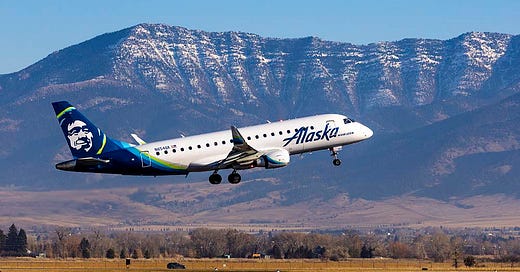Alaska Air: Rebound, or air ball?
Let's explore the possible repercussions of Alaska air's newest venture into the international market.
Alaska Airlines has long been a prominent carrier in the U.S. aviation market with a stronghold on West Coast routes and is widely known for its operational efficiency. Headquartered in Seattle, the airline primarily serves destinations in the United States, Canada, Mexico, and Costa Rica. Alaska Airlines, in my view, is a quiet but steady player in an industry dominated by mergers (such as United and JetBlue) and legacy giants like American. But recently, Alaska Airlines is steadily expanding its reach beyond its West Coast base, signing strategic partnerships and acquisitions to grow its domestic and international presence. For example, the airline’s planned acquisition of Hawaiian Airlines means they will be more prominent in the Pacific region, showing how Alaska is aiming to scale operations while maintaining its reputation for reliability and service. And recently, it has tapped its feet into the international market too.
Alaska has joined the Oneworld alliance, and in doing so has strengthened its global connectivity by allowing it to codeshare with international carriers and tap into new markets without extending its fleet drastically. Furthermore, investments in fleet upgrades and long-haul infrastructure suggest that this is more than just a one-time thing, but, rather, if executed effectively, Alaska could transform from a strong domestic player into a credible contender on international routes.
However, Alaska Airlines’ push into international markets could backfire if not managed carefully. The integration of Hawaiian Airlines poses significant operational and cultural challenges, particularly in aligning fleets, staff, and customer experiences. Expanding into long-haul routes also exposes Alaska to intense competition from well-established global carriers with far deeper international expertise and resources. Moreover, the capital required for fleet modernisation and international infrastructure could strain the airline’s finances, especially if demand projections fall short. Thus, this free throw could end up being a game-winner or a sour punch they would always remember.






Very good article and information.
The article is informative and meaningful for its balanced, insightful analysis of Alaska Airlines’ evolving strategy and industry positioning.